Wasted chain of more than 20 billion VND
In mid-April, we were present at the high-tech production line workshop of the Cua Tile Production and Service Cooperative (Hoan Long Commune, Tan Ky District). This is a "once-famous" craft village, the largest tile production site in the Central region decades ago. The craft village used to belong to Nghia Hoan Commune, but Nghia Hoan later merged with Tan Long Commune, now renamed Hoan Long.
“What a pity, uncle! It’s just because of the lack of internal unity that we’ve come to this point, wasting so many years,” said Mr. Nguyen Huu Nga (60 years old) - Deputy Director of the Cua Tile Production and Service Cooperative. Mr. Nga was the person we accidentally met when we entered the craft village, where he was absent-mindedly looking at the old tile kiln foundations that were once bustling.
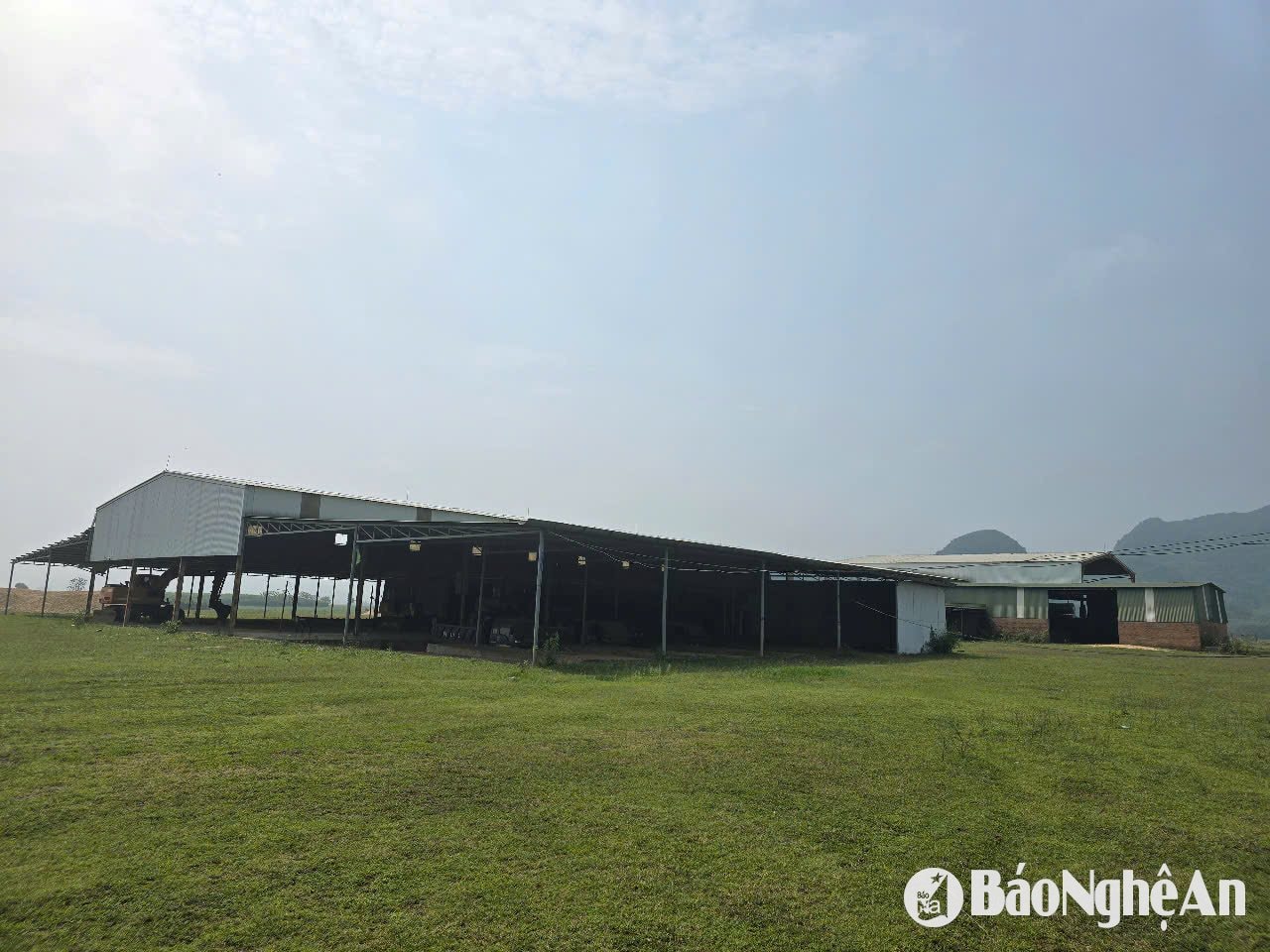
Leading us into the thousands of square meter factory, Mr. Nga said that this is a high-tech blank supply line, which the cooperative invested more than 20 billion VND to build since 2012. Operating for a few years, in 2017, when the manual tile kilns were forced to stop operating according to the policy, the high-tech tunnel brick factory project was opposed, so this line had to be abandoned.
Outside the factory is a vast, empty lot, once bustling with buyers and sellers, now only used for grazing cattle and buffalo. Inside, many machine parts have rusted after many years of inactivity. Trucks, excavators, etc. have been sitting in the same place for the past 8 years, covered in dust and dirt. In previous years, this area was still guarded. But now, due to lack of money to hire guards, the guardhouse is abandoned, and many parts of the factory have been disassembled and stolen to sell as scrap metal.
“Because of regret, I occasionally come back to visit. Every time I go back, I find that the factory is missing something. If this continues, it won’t be long before this billion-dollar tile production line will have nothing left,” Mr. Nga said, clicking his tongue.
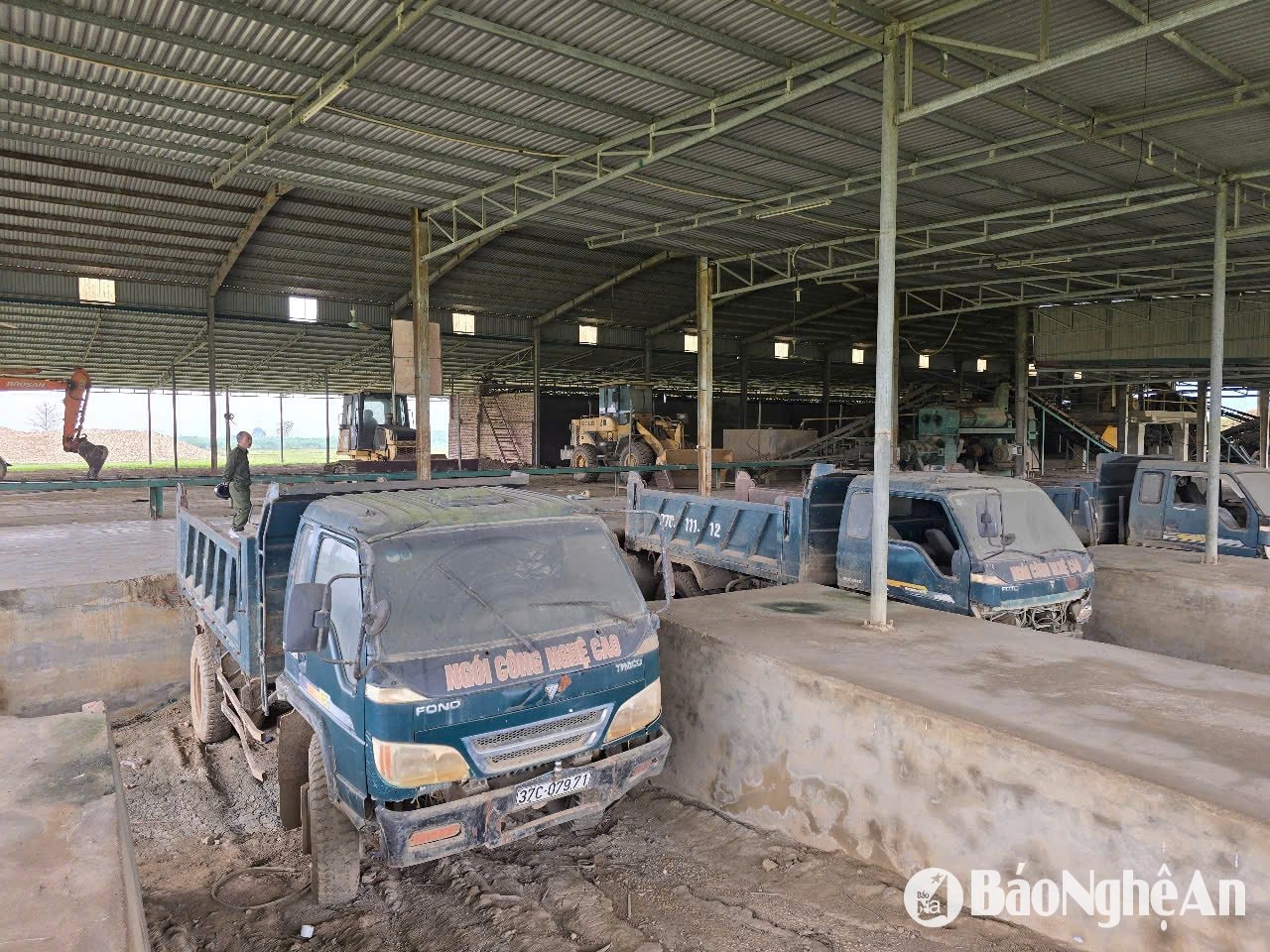
Not far from this factory, there used to be hundreds of towering handmade tile kilns. Not long ago, after many years of being idle, the local government had to allocate funds and hire machinery to demolish them. Now, only the old foundations remain, the only trace to remind us of the craft village that was once glorious for many years.
“The high-tech factory is just a production line for tiles. To make tiles, we have to invest in many more items, and have a tunnel tile factory. But because we cannot find a common voice to continue investing, this production line has become useless. Now we just want all parties to unite to sell this factory. To anyone who has the passion to invest and restore the craft village,” Mr. Nguyen Huu Nga added.
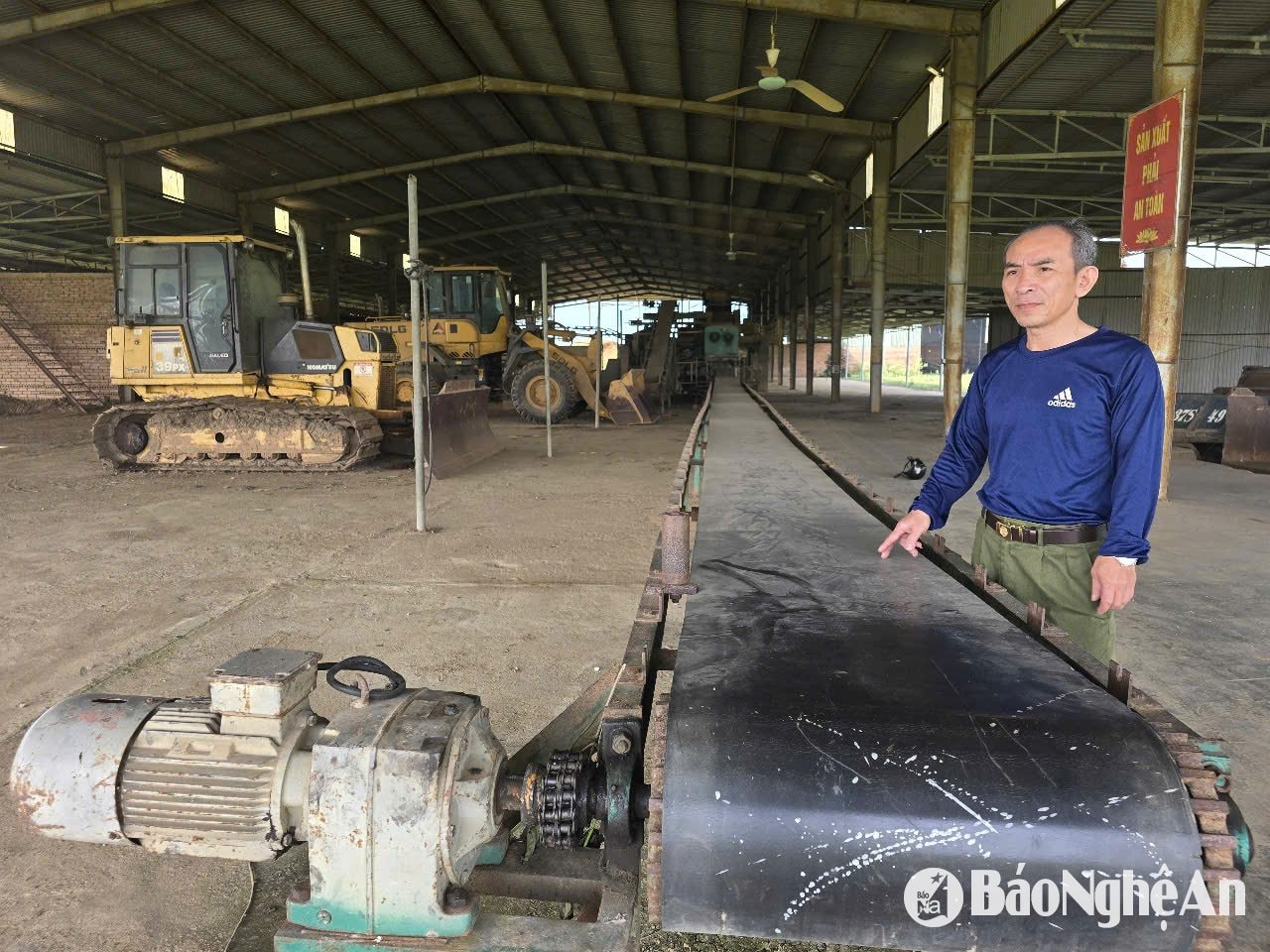
Need a solution soon
Not long after the country was reunified, a family from the North came to the land of Nghia Hoan (old) to live, bringing with them the family's traditional tile-making profession. In 1976, the first tile kiln here was built. Seeing that this family made tiles with "good food and savings", many others also began to learn the profession. The famous Cua tile village was born from that time.
In 2006, after decades of “everyone doing their own thing”, the Cua Tile Production and Service Cooperative was established, with 125 members. During its heyday, there were nearly 200 tile kilns here, creating jobs for thousands of workers. There were years when nearly 100 million tiles were produced here, enough for tens of thousands of level 4 houses. In tax declarations, the profit from the tile making profession here was up to 120 billion VND. Many households had profits of up to billions of VND each year. During those years, Cua village tiles had a near monopoly in the market of 6 provinces in the North Central region, and were even exported to Laos. Cua village was also the largest tile producing village in the Central region.
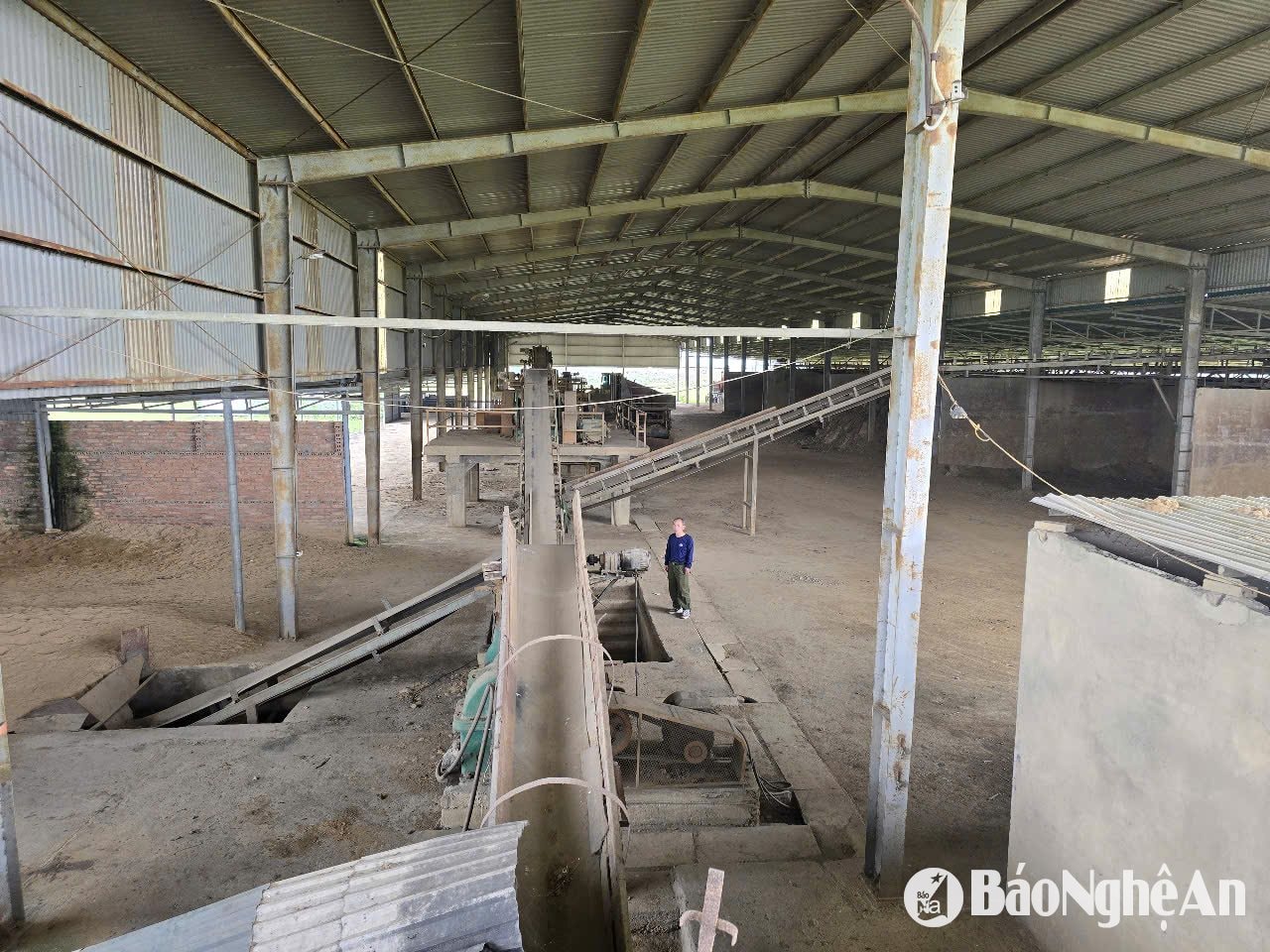
Mr. Nguyen Huu Nga said that in 2012, 53 households out of 125 members of the cooperative contributed additional capital to build a high-tech production line, with an initial total investment of more than 20 billion VND. “That was the right decision, aiming to modernize tile production technology. Especially after that, the State had a policy to eliminate manual tile kilns,” Mr. Nga said.
By 2017, the policy of eliminating the manual tile kiln in Nghia Hoan was implemented. In order for the craft village to continue operating, the cooperative requested permission to invest in a high-tech tunnel tile factory, with an investment scale of more than 75 billion VND. "I am the person who has served 2 terms as deputy director of the cooperative, so I remember it very clearly. I was also the person who directly applied for the investment license for this factory," Mr. Nga said, adding that at that time, the cooperative also held a congress and unanimously passed a resolution that, in addition to the 53 households that had contributed capital to build the blank supply line since 2012, the remaining member households had to contribute an additional capital of 200 million VND/member to have money to build the factory. Although the resolution was passed, no members contributed additional capital afterwards.
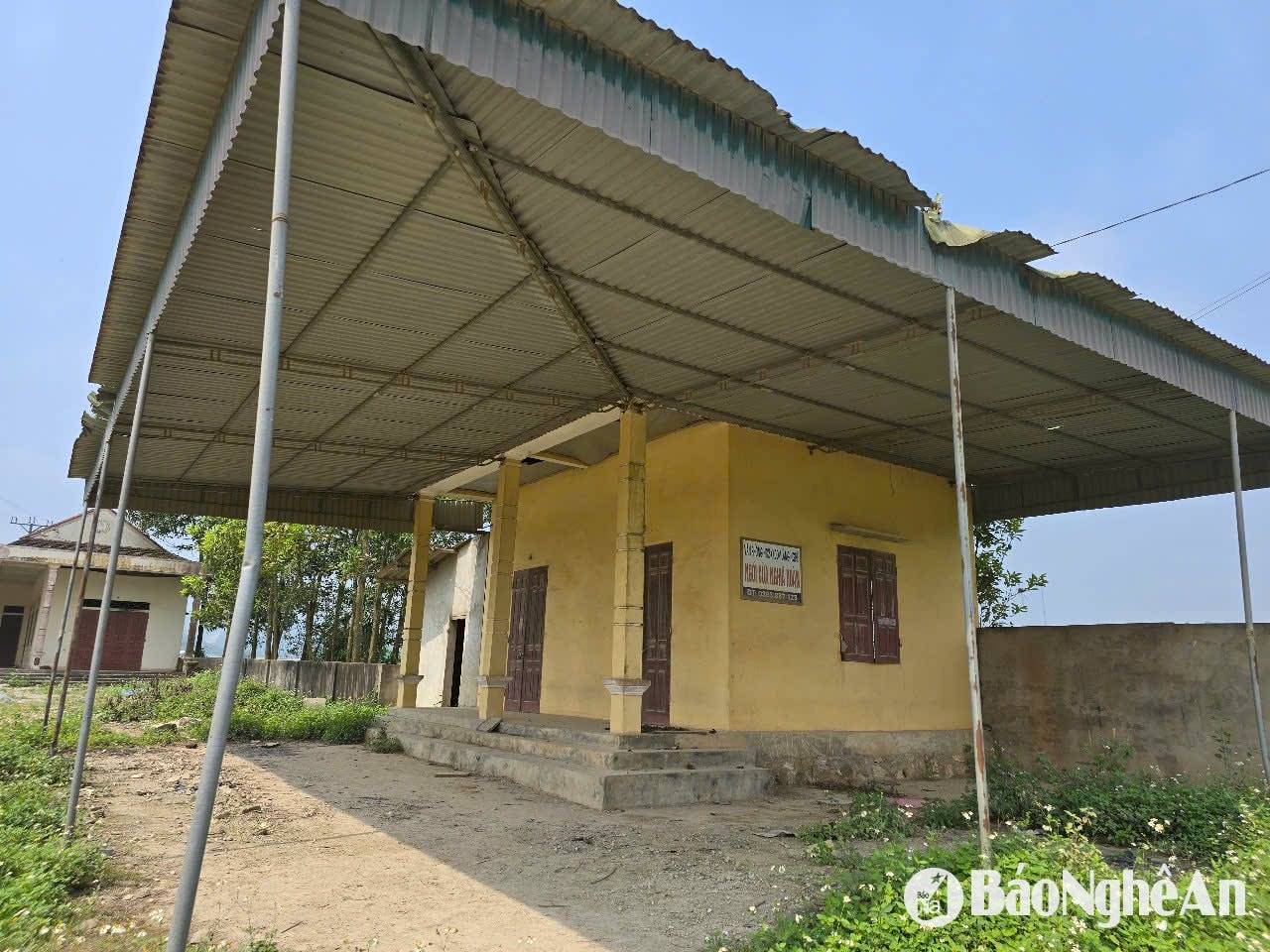
However, in 2019, the project to build a tunnel tile factory was still started. But during the groundbreaking ceremony, dozens of cooperative members came to protest. “They said they invested too much money, did not want to do it anymore, and did not agree to build the factory. Therefore, the project was not implemented. From a united and strong cooperative, it was divided into many parts, and many people started to sue,” said Mr. Nga.
After dozens of dialogues but still unable to find a common voice, in 2020, the local government and the cooperative decided to price the high-tech embryo supply line for sale, then divide the money among all members and dissolve the cooperative.
“I still remember that at that time, all the members of the cooperative agreed on that solution. They also calculated and valued the production line at 16 billion VND. Some outside investors also came and asked to buy it back. But when it came to the procedures, some cooperative leaders changed their minds and did not want to sell it anymore, so they did not agree to sign. They did not want to sell, but they also did not want to buy back the capital contributions of other members. That is why the case has been lingering until now, causing the production line worth tens of billions to be wasted for many years,” said Mr. Nguyen Van Sam - Chairman of the People's Committee of Hoan Long Commune, adding that due to internal fighting, the high-tech tile production project has not been implemented yet. Therefore, the manual kilns no longer exist, the high-tech kilns do not exist, and thousands of workers are unemployed. Many kiln owners have invested billions of VND, but now they are bankrupt.
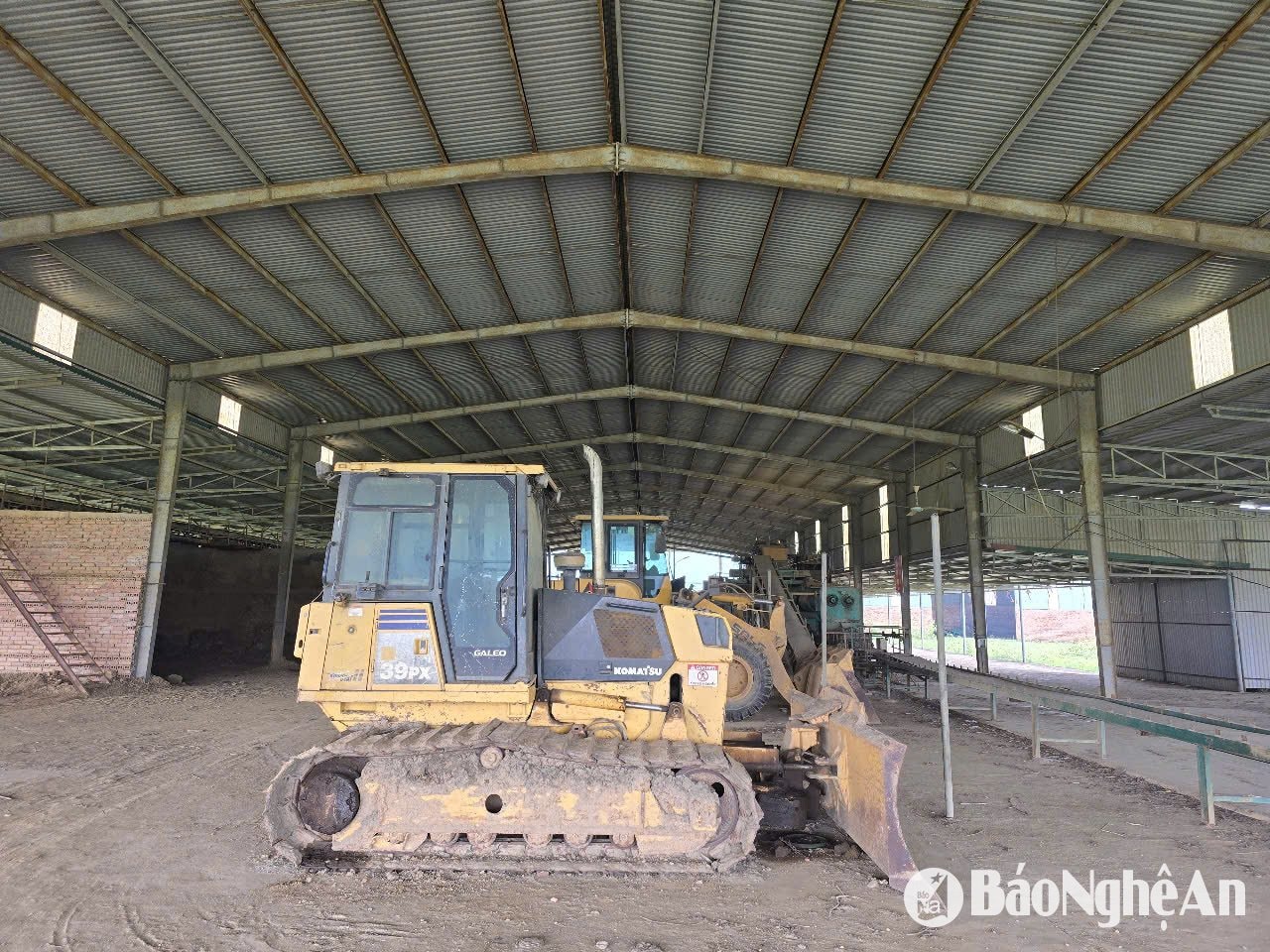
The Chairman of the People's Committee of Hoan Long Commune said that the only solution now is for the cooperative members, especially the leaders, to find a common voice to agree to sell the high-tech embryo supply line. "Leaving it like this now is also a waste of the cooperative members' money. We want the cooperative to sell it to investors, to plan this area into an industrial cluster, taking advantage of available resources to restore the once famous Cua tile brand," Mr. Sam added.
Source: https://baonghean.vn/be-tac-o-lang-ngoi-vang-bong-mot-thoi-10295485.html


![[Photo] Close-up of Tang Long Bridge, Thu Duc City after repairing rutting](https://vphoto.vietnam.vn/thumb/1200x675/vietnam/resource/IMAGE/2025/5/19/086736d9d11f43198f5bd8d78df9bd41)
![[Photo] General Secretary To Lam attends the conference to review 10 years of implementing Directive No. 05 of the Politburo and evaluate the results of implementing Regulation No. 09 of the Central Public Security Party Committee.](https://vphoto.vietnam.vn/thumb/1200x675/vietnam/resource/IMAGE/2025/5/19/2f44458c655a4403acd7929dbbfa5039)

![[Photo] Panorama of the Opening Ceremony of the 43rd Nhan Dan Newspaper National Table Tennis Championship](https://vphoto.vietnam.vn/thumb/1200x675/vietnam/resource/IMAGE/2025/5/19/5e22950340b941309280448198bcf1d9)

![[Photo] President Luong Cuong presents the 40-year Party membership badge to Chief of the Office of the President Le Khanh Hai](https://vphoto.vietnam.vn/thumb/1200x675/vietnam/resource/IMAGE/2025/5/19/a22bc55dd7bf4a2ab7e3958d32282c15)
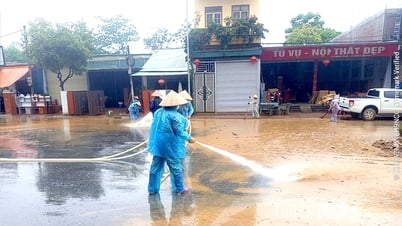






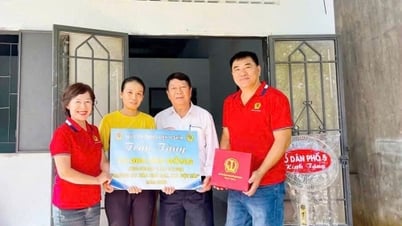





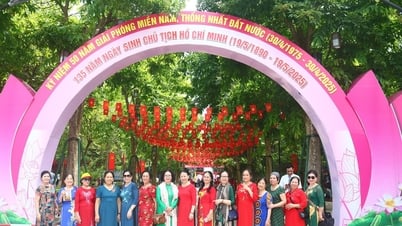




![[Photo] Prime Minister Pham Minh Chinh inspects the progress of the National Exhibition and Fair Center project](https://vphoto.vietnam.vn/thumb/1200x675/vietnam/resource/IMAGE/2025/5/19/35189ac8807140d897ad2b7d2583fbae)


















































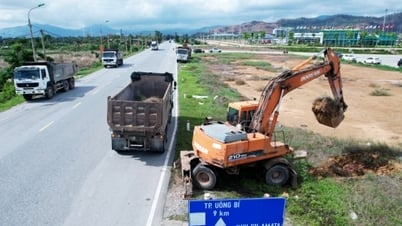







![[VIDEO] - Enhancing the value of Quang Nam OCOP products through trade connections](https://vphoto.vietnam.vn/thumb/402x226/vietnam/resource/IMAGE/2025/5/17/5be5b5fff1f14914986fad159097a677)


Comment (0)